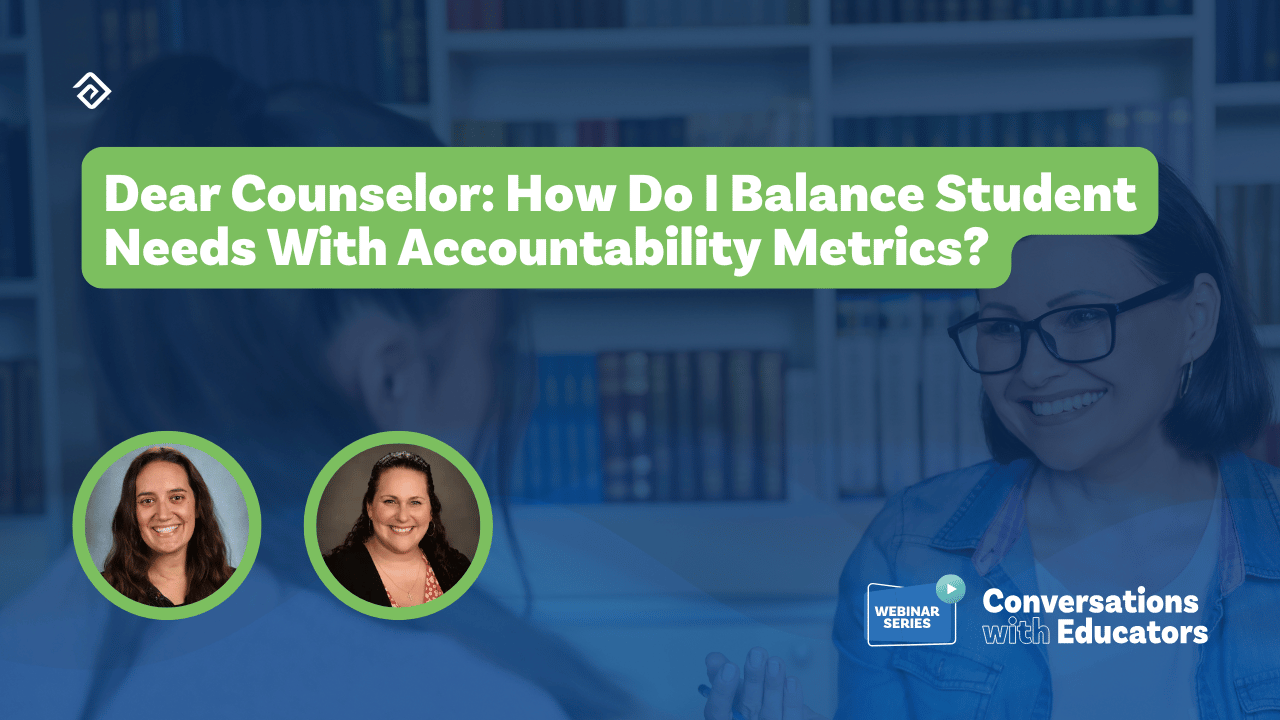What Is Equity in Education? Strategies for Schools and Teachers in 2024

Equity and inclusion in education are all about giving every student an equal opportunity to learn and grow. It’s also about making sure every student feels valued and supported by their teachers and classmates. In essence, you’re creating a learning environment where everyone can thrive.
Read on to learn more about fostering educational equity and tips for ongoing success.
Understanding the Importance of Equity and Inclusion in Education
As classrooms become increasingly diverse — thanks to global challenges like rising inequality, digital transformation, and refugee crises — there’s a growing need for equity and inclusion in the education system. According to an EdWeek Research Center survey, 65% of school leaders are more concerned than ever about closing academic opportunity gaps that impact learning for students of different races, socioeconomic levels, disability categories, and English-learner statuses. An equitable approach goes beyond crossing ethnic and identity boundaries to ensure that every student has a fair shot at academic achievement.
Equity in Education
At its heart, educational equity means giving all students equal access to top-notch learning opportunities. It’s about removing barriers and creating a level playing field, no matter a student’s background, abilities, or circumstances. Fair education recognizes that each learner has unique needs and aims to support them in the best way possible.

Inclusion in Education
Inclusion, on the other hand, emphasizes creating an environment where diversity isn’t just accepted but celebrated. It involves embracing all the ways people are different — whether it’s their culture, language, learning styles, or abilities. Inclusive education understands that these differences enrich learning and prepare students to reach improved educational outcomes and thrive in a diverse world.
Why These Principles Matter
So, why are equity and inclusion so crucial in a quality education system? The answer is simple: they have a huge impact on both individuals and society. When students have an equal opportunity for education, they're more likely to excel, pursue higher education, and make positive contributions to their communities.
Equitable education ensures that every student, no matter their background, feels valued and succeeds in school. It helps close the achievement gap and fosters a sense of belonging for all.
Inclusion goes hand in hand with equity by promoting empathy, respect, and understanding among students. It prepares them to thrive in a diverse, interconnected world. Plus, it supports disabled and disadvantaged students by creating an environment where they can fully participate and reach their potential.
Ultimately, these principles lay the groundwork for a fair and just society. As UNESCO puts it, "Every learner matters and matters equally."
Overcoming Barriers to Equity in Schools Today
To create an equitable learning environment, schools must tackle several key barriers head-on. Here’s a look at these challenges and how to address them:
- Socioeconomic hurdles: Poverty and lack of resources can hold underserved students back. Schools can step up by offering extra support and resources to help all learners reach academic achievement.
- Cultural and language gaps: Students from diverse backgrounds might feel left out or misunderstood. Teachers can make a big difference by using culturally responsive teaching and providing language support.
- Learning differences: Every student learns differently. For disabled or disadvantaged students with unique learning needs, personalized learning plans and accessible resources are key to helping them thrive.
- Bias and discrimination: Bias and discrimination can create inequity. Schools should minimize this through diversity training and a commitment to equity and inclusion at all levels.
8 Key Steps for Building Equity and Inclusion in Education
To close the equity gap and create a fair and inclusive educational environment, stakeholders and educators need to take thoughtful action. Here are eight crucial steps to enhance fairness and ensure every learner feels valued:
1. Understand and Recognize Diversity
Dive deep into understanding the diverse backgrounds, cultures, and needs of your students. Recognizing this diversity allows for tailored approaches that support every learner's unique experiences and perspectives.
2. Create an Inclusive Policy Framework
Develop a policy framework that embeds fairness and inclusion at every level of the school system. Governments should review how education is managed, funded, and overseen to ensure all students’ needs are met.

3. Design Fair Funding Approaches
Implement funding plans that focus on equity and inclusiveness. This means balancing regular and targeted funding to avoid issues like redundant programs, disorganization, and inefficiencies.
4. Equip Teachers for Inclusive Teaching
Ensure that teacher training and professional development emphasize equity and inclusion. This helps educators embrace diversity and create supportive classroom environments.
5. Engage All Stakeholders for Inclusive Education
Engage teachers, parents, students, and advocacy groups in promoting equitable access and inclusive policies. Collaboration helps build understanding and improves the learning environment for everyone.
6. Tailor Support for Individual Student Needs
Provide personalized support to meet the unique needs of each student. This might include specialized learning plans and access to psychological services to aid their education outcomes.
7. Ensure Equitable Access to Resources
Guarantee that all students have access to necessary resources, including technology, learning materials, and extracurricular opportunities. This helps level the playing field and ensures that no student is left behind.
8. Make Education Flexible
Make sure education systems are flexible and responsive to individual needs. This can involve offering:
- A range of class options
- Inclusive curricula
- Diverse teaching methods, like one-on-one or small-group instruction
7 Practical Ways Teachers Can Make the Classroom More Equitable and Inclusive
Promoting fairness and inclusion in the classroom ensures every student has equal opportunities to learn and feel like they belong. Here are seven practical tips to help educational leadership foster equity and inclusion:
1. Start With Yourself
Start by examining your own beliefs and biases. Stay curious about different cultures and backgrounds, and be open to learning from diverse perspectives.
2. Set Clear Rules
Make sure every student understands the classroom rules, which should focus on respect and openness to differences.

3. Use Diverse Materials and Teaching Styles
Use learning materials and activities that reflect the diversity of your students. Since everyone learns differently, mix up your teaching methods and present various viewpoints.
4. Incorporate a Dynamic Classroom Setup
Arrange the classroom to encourage collaboration. This might mean rearranging desks to promote group work and interaction.
5. Let Students Choose
Involve students in choosing topics and learning strategies. Allowing them to express their interests and share their experiences boosts their sense of autonomy and engagement.
6. Make Room for Learning Styles and Disabilities
Ensure your classroom supports various learning styles and disabilities by:
- Presenting information in multiple formats (e.g., verbal, aural, and visual)
- Reading test instructions aloud
- Providing transcripts for multimedia content
- Using a range of media, like movies and audiobooks
- Offering supplementary materials, such as illustrations and glossaries
- Ensuring technology is accessible (e.g., adjustable screen brightness, and enlarged text)
7. Find Help
Look for resources designed to help create a more equitable and inclusive classroom. Learn how to use these tools to improve your teaching practices.
By applying these strategies, you’ll help ensure that every student has a fair chance to learn and feel included in your classroom community.
Measuring and Evaluating Your School’s Equity Efforts
You can measure and evaluate the impact of your school district’s equity initiatives by:
- Setting clear goals and benchmarks: Establish specific objectives and benchmarks to gauge the success of your equity efforts.
- Collecting and analyzing data: Regularly gather data on student performance and experiences to get a clear picture of how your initiatives are performing.
- Adjusting strategies as needed: Use the insights from your data to tweak and enhance your strategies, ensuring they align with your goals.
- Celebrating successes: Recognize and celebrate milestones to keep the momentum going and motivate continued progress.
A Collaborative Path Toward Equity and Inclusion
Achieving equity and inclusiveness in education is essential, especially in today’s diverse classrooms. Schools need to equip educational leadership with the right training and resources to embrace these crucial concepts.
It all starts with self-reflection and adopting strategies that celebrate differences. Teachers are key to this effort, and schools can leverage powerful tools to create a more equitable and inclusive learning environment.
If you’re looking for new ways to enhance the student learning experience, consider automating tasks and streamlining processes to give teachers more time to focus on teaching. Education Advanced offers a range of tools designed to help, including:
- Testhound: Our test accommodation software helps schools manage thousands of students across state and local assessments, accommodating various needs like reading disabilities, physical disabilities, and translations.
- Pathways: Our college and career readiness software assists administrators and counselors in creating, tracking, and analyzing graduation pathways to keep students on track.
- Evaluation: Our teacher evaluation software streamlines the evaluation process with features for documenting walk-throughs, self-evaluations, supporting evidence, reporting, and performance analytics.
Original Publish Date October 26, 2023 | Updated August 14, 2024
More Great Content
We know you'll love





